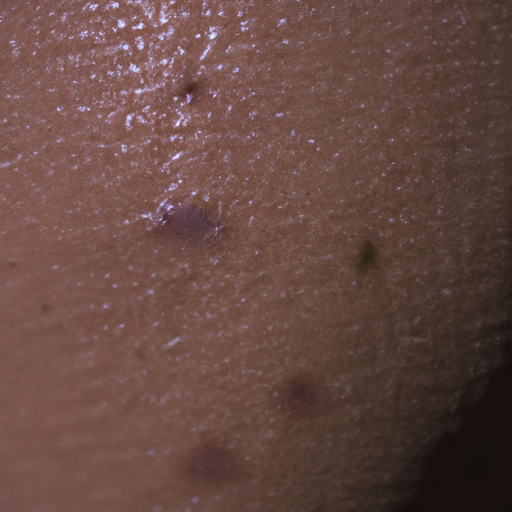As a dermatologist, I often encounter patients who are distressed by the presence of acne on their skin. Acne is a common skin condition that affects people of all ages, but it is particularly prevalent among teenagers and young adults. It can cause significant emotional distress and impact self-esteem, making it crucial to understand its symptoms and causes. This article aims to unmask acne, providing a deep dive into its symptoms and causes.
Acne is characterized by the appearance of different types of spots on the skin, primarily on the face, back, and chest. These spots can range from blackheads and whiteheads, which are often mild, to more severe forms such as papules, pustules, nodules, and cysts. Blackheads are small black or yellowish bumps that develop on the skin; they’re black because of the pigmentation process in the skin’s pores. Whiteheads are similar but may appear as firmer bumps that can’t be emptied when squeezed.
Papules are small red bumps that can feel tender or sore, while pustules are similar but have a white tip in the center caused by a build-up of pus. Nodules are large hard lumps that build up beneath the surface of the skin and can be painful. Cysts are the most severe type of spot caused by acne; they’re large pus-filled lumps that look similar to boils and carry the greatest risk of causing permanent scarring.
The causes of acne can be multifaceted, but it primarily occurs when hair follicles become plugged with oil and dead skin cells. Our skin has tiny holes called pores, which can become blocked by excess sebum (an oil produced by the sebaceous glands in the skin), dead skin cells, and bacteria. When these substances accumulate in a pore, they can cause an inflammatory response leading to the formation of acne lesions.
Hormonal changes also play a significant role in the development of acne. Androgens, a type of hormone that increases during puberty, can cause the sebaceous glands to enlarge and produce more sebum. This hormonal imbalance can lead to an overproduction of oil, resulting in clogged pores and breakouts.
Moreover, certain medications, including corticosteroids, lithium, or androgenic steroids, can trigger acne. Diet can also contribute to acne development. Some studies suggest that certain dietary factors, including skim milk and carbohydrate-rich foods — such as bread, bagels, and chips — may worsen acne.
Genetics is another significant factor. If both your parents had acne, you’re likely to develop it too. Stress doesn’t cause acne, but if you have acne already, stress may make it worse.
Understanding the symptoms and causes of acne is the first step towards managing this condition. If you’re struggling with acne, remember that you’re not alone and that effective treatments are available. It’s important to consult with a dermatologist who can provide personalized advice based on your specific skin type and condition.
In conclusion, acne is a common skin condition that can cause both physical and emotional distress. It’s characterized by various types of spots on the skin caused by clogged pores due to excess oil, dead skin cells, bacteria, hormonal changes, certain medications, diet, and genetics. By understanding these symptoms and causes, we can better manage and treat this condition, improving both skin health and self-esteem.



